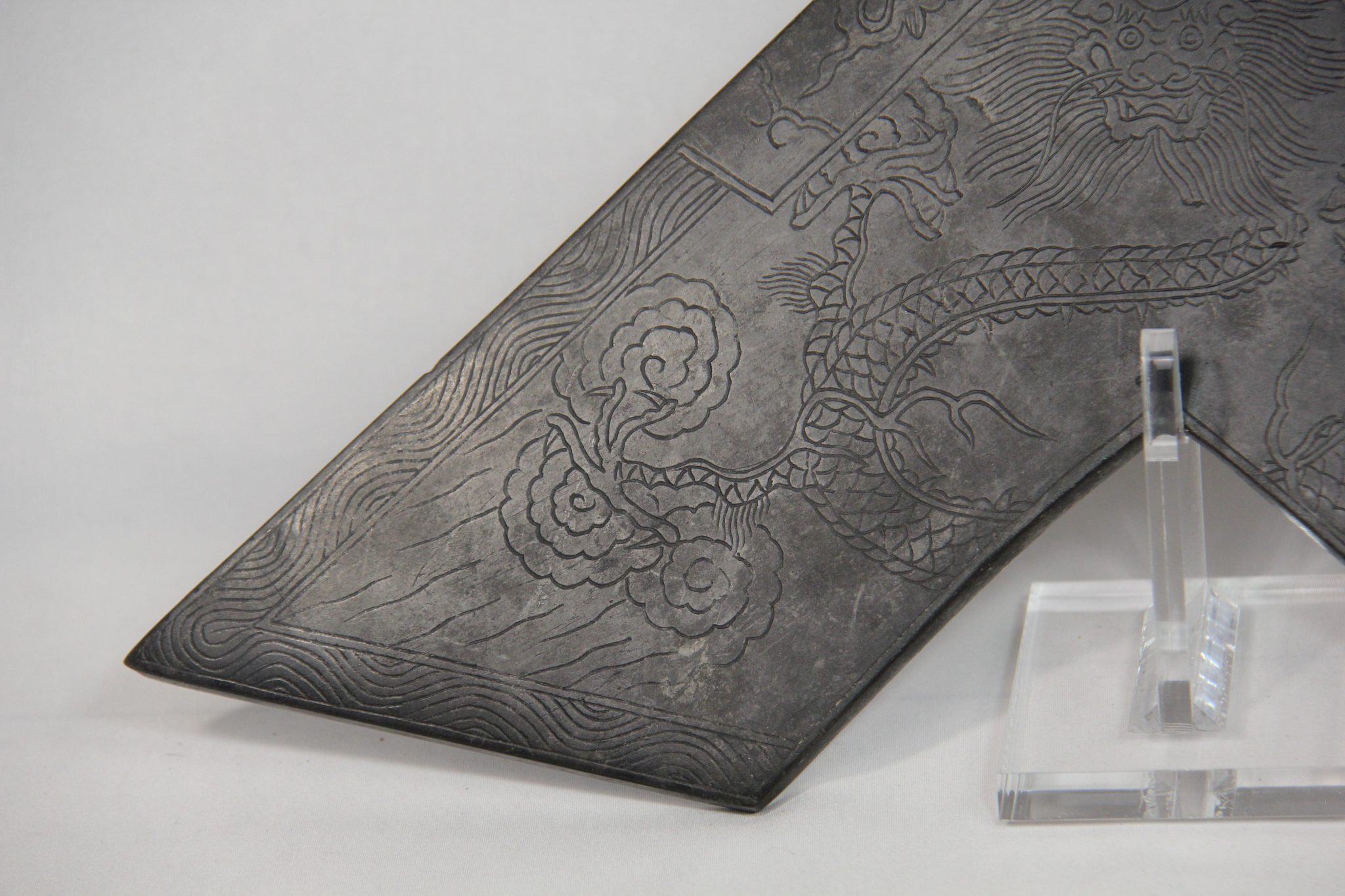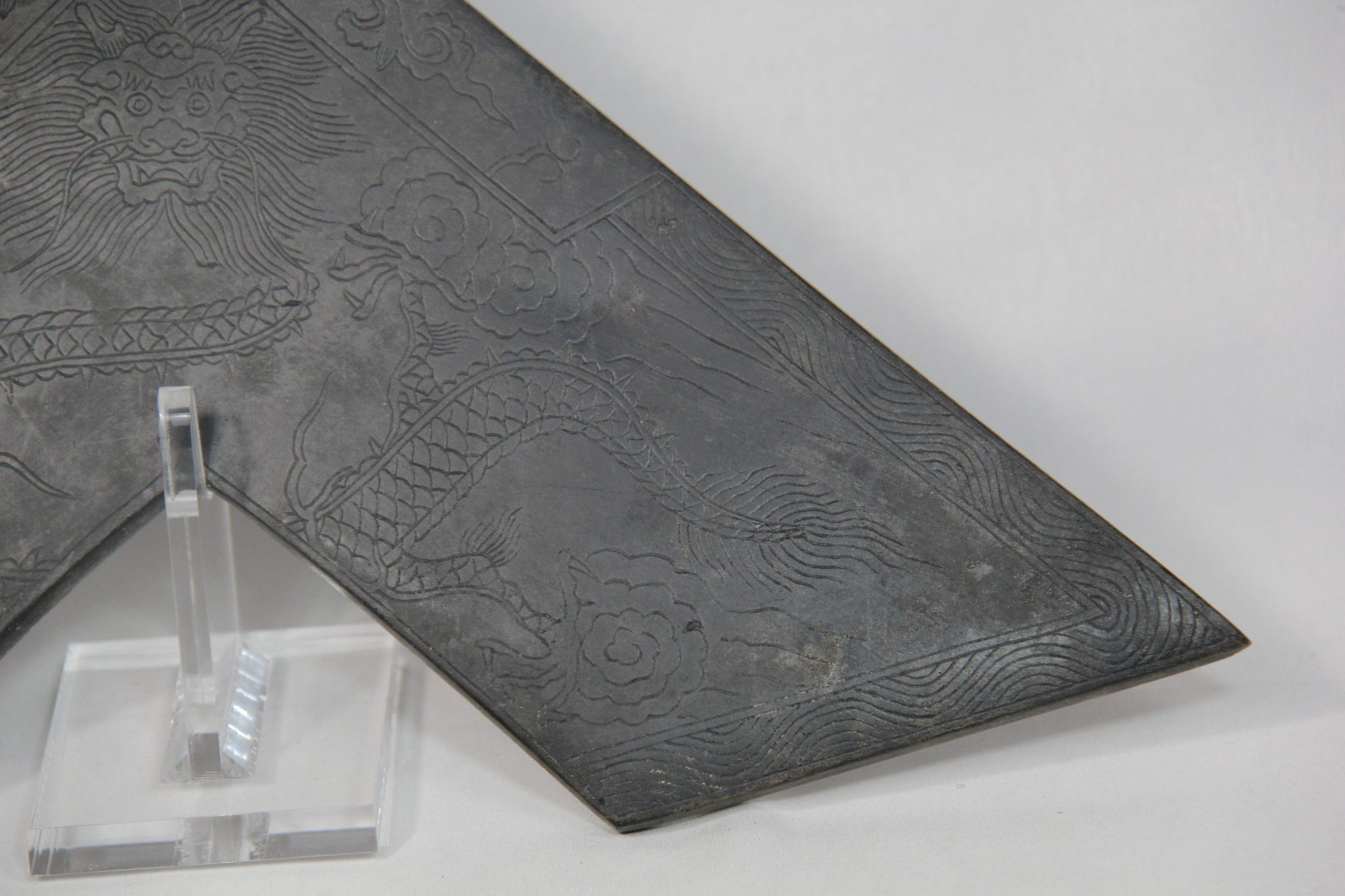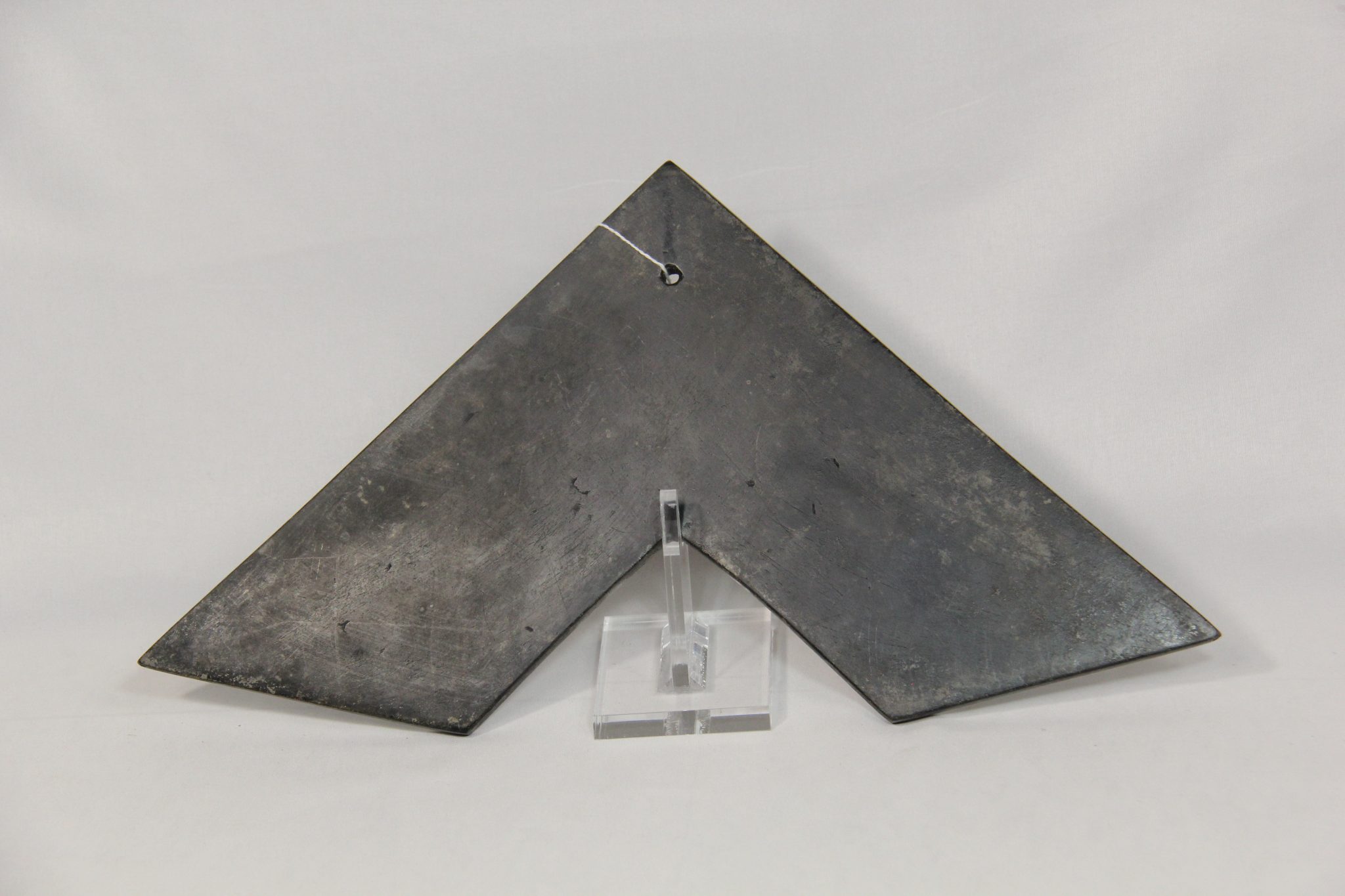Shí Qìng (石磬)
石磬 shí qìng, shortened to 磬 qìng, also called sounding stone, is an ancient Chinese percussion and ritual instrument used by the Han people that is typically L-shaped and made of stone or jade.
The qing dates back to matriarchal societies in the 21st century BC. To play it, it is hung on a frame and struck with a mallet.
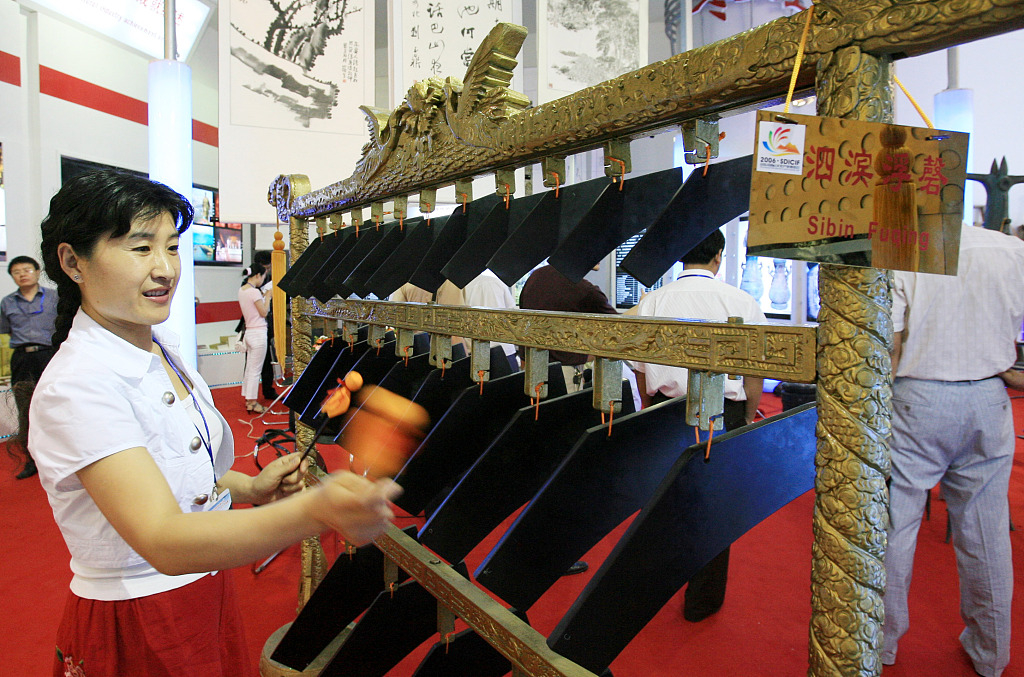
A set of sixteen qing is called 编磬 biān qìng which, along with the bronze bells called 编钟 biān zhōng, were an important instrument in ritual and court music going back to ancient China and also in Confucian temples. Each qing has differing thicknesses, which affects the tone that is produced when struck.
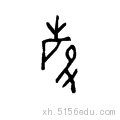
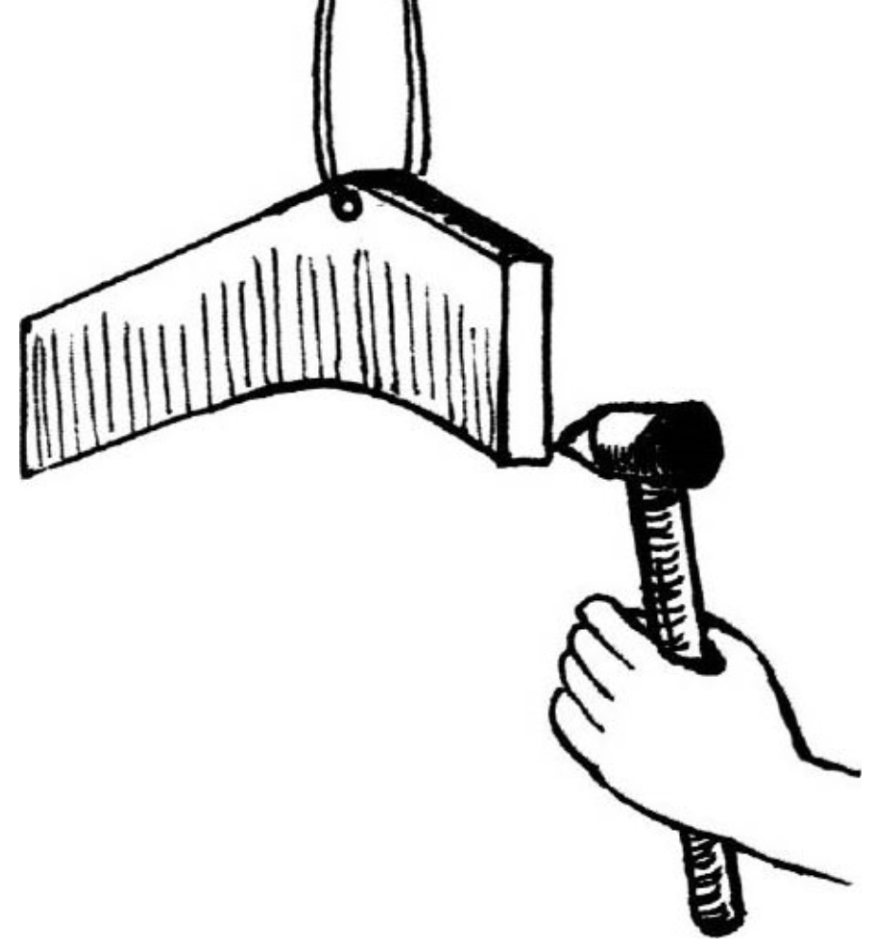
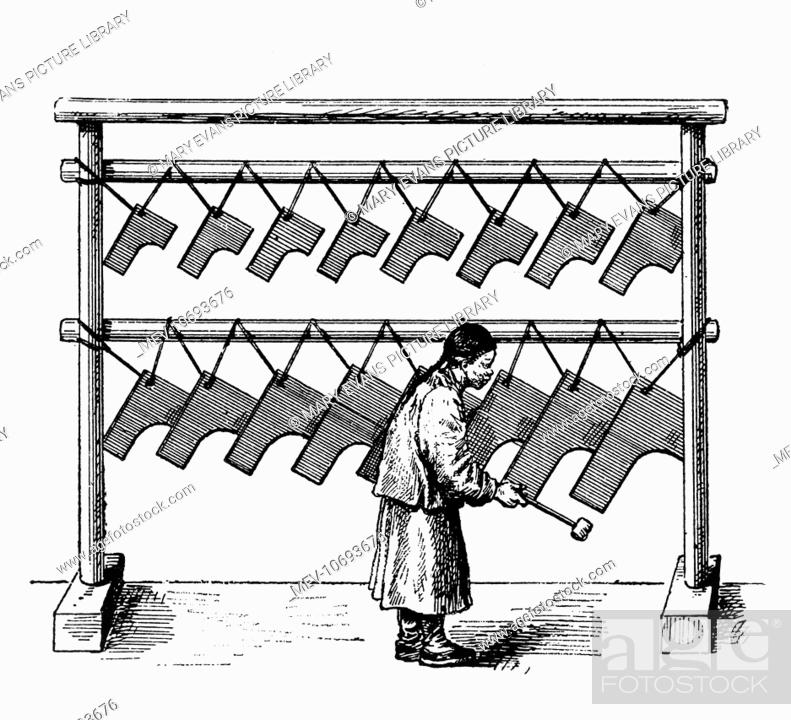
Sources
“石磬_百度百科.” 2021. 百度百科. 2021. https://baike.baidu.com/item/%E7%9F%B3%E7%A3%AC/644129#6.
5156edu.com. 在线汉语字典. Accessed June 21, 2022. http://xh.5156edu.com/hzyb/a15655b44777c46186d.html.
“《磬》字义,《磬》字的字形演变,小篆隶书楷书写法《磬》.” 品诗文网. Accessed June 21, 2022. https://www.pinshiwen.com/yuexie/shuojie/20200803283320.html.
“Bianqing | MIM.” Bianqing. Accessed June 21, 2022. https://www.mim.be/en/collection-piece/bianqing.

